Catastrophic mass die-off of saiga antelopes seen in central Kazakhstan
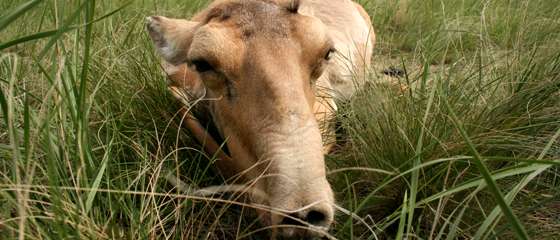
More than 120,000 saiga antelopes died in central Kazakhstan in May according to a report by The Association for the Conservation of Biodiversity of Kazakhstan (ACBK) – Fauna & Flora International's partner in country.
Although mass mortality events are not unheard of, the scale and speed of this event has shocked even the experts.
The first signs of trouble came on 10-11 May 2015 when hundreds of saiga were reported to have died in Kostanay region. As information about similar occurrences flooded in from across central Kazakhstan, the death toll shot up from hundreds to thousands and then tens of thousands of animals.
Males, females and calves have all been affected, with sick animals showing weakness, lethargy and a loss of coordination that makes walking difficult. Affected animals also suffer from diarrhoea and frothing at the mouth. After just a few hours, they are unable to stand up or breathe properly, and soon die.
Figures for the total number of saiga lost (which today stands at over 120,000) have been provided by the Ministry of Agriculture of the Republic of Kazakhstan, which has been working with local and national agencies to collect, count and bury the saiga carcasses, and with experts to investigate the cause of this die-off.
Getting vets on site
According to ACBK, saiga mass mortality events have been observed regularly in recent years, but on a much smaller scale.
The most likely cause of death for these historical events is thought to be pasteurellosis (a digestive illness that results from saiga feeding in pastures that are too lush and moist); however the blood and tissue samples collected to date have not been fresh enough to provide definitive results.
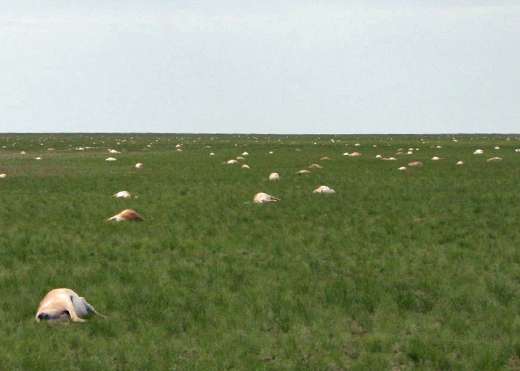
This time, however, the situation is a little different.
Since 2012, ACBK has been cooperating with the Research Institute for Problems of Biological Safety (RIPBS), which is researching saiga health status and disease. As part of this work, ACBK was monitoring saiga calving in the Kostanay region in May and witnessed the first deaths as they occurred.
They immediately contacted RIPBS and the Royal Veterinary College (RVC) in London, and a team of veterinary specialists was soon on site to gather samples from the carcasses, with support from ACBK staff.
At the same time, the Ministry of Agriculture sent for international specialists to join local experts in the country, and on 22 May Professor Richard Kock from RVC joined ACBK staff in the Akmola region to investigate the die-off at that site, accompanied by the vice-minister Nysanbayev.
Sergey Khomenko from the UN's Food and Agriculture Organsation (FAO) and vets from RIPBS also joined the mission on 24 May.
Getting positive outcomes from a dire situation
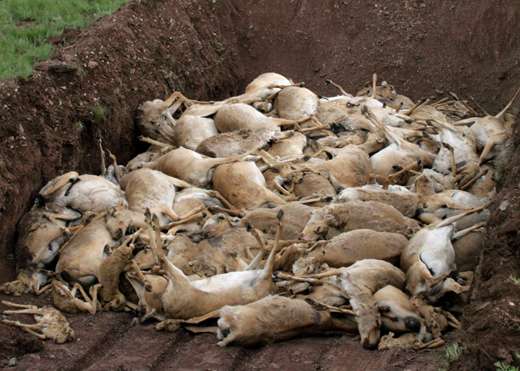
At the moment, experts are only able to speculate as to the cause of this event, which seems to be unusual.
Although a number of theories have been suggested, experts won't know for sure until they receive the RIPBS laboratory results later this year.
Although this situation is very concerning, Fauna & Flora International's Eurasia Regional Director Paul Hotham believes there are some positives to take from it.
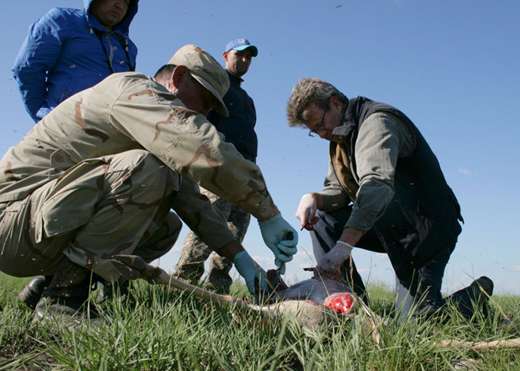
"First, ACBK was on site from the first day of the event, which allowed them to observe the symptoms and progress of the illness as it struck," he explains. "Second, veterinary experts were able to get to the site quickly to conduct necropsies of fresh carcasses and obtain the samples they needed. All this means that we have a good chance this time of understanding what has caused these deaths."
"Lastly, it's important to remember that saiga have a high reproductive rate, which means that populations can recover. But to allow this to happen, we need to do everything we can to reduce hunting and other pressures on the saiga, so that they can bounce back from this disaster."
Recognising the severity of this event, a ministerial working group has been established to discuss the saiga mass die-off. Fauna & Flora International is also providing emergency funding to support ongoing investigations and help ACBK take remedial actions to boost saiga recovery.
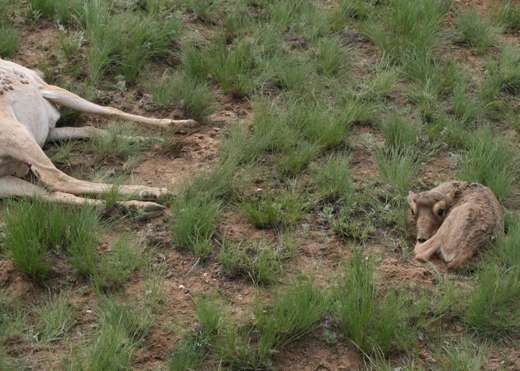
Provided by Fauna & Flora International




















